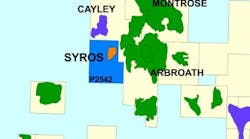Offshore staff
TRONDHEIM, Norway – Heavelock and TECHNI A/S have signed a development agreement for a new downhole tool that addresses drilling of challenging reservoirs from floating rigs.
One of the issues is the ‘piston effect’ downhole that occurs when the drillstring moves up and down with the heave of a floating rig.
This can cause problems during drill pipe connections when the heave compensation system is disabled. In some wells, the piston effect can increase the risk of kicks and blowouts or lead to permanent damage of the reservoir.
The Heavelock system senses the movement of the drillstring and measures the downhole pressure. It dynamically and autonomously opens up or restricts the flow of mud to compensate for downhole pressure fluctuations.
Heavelock CEO Martin Kvernland said: “There have been a number of deepwater projects that could not be developed due to technical risk associated with narrow pore-pressure/fracturing pressure envelope. The Heavelock system enables drilling these wells.”
Professor Ole Morten Aamo at the Norwegian University of Science and Technology (NTNU) invented the system which resulted from follows a collaboration between NTNU and Statoil and which is managed by venture capital firm CoFounder.
The system is undergoing further development to meet Statoil’s specifications.
03/31/2017




